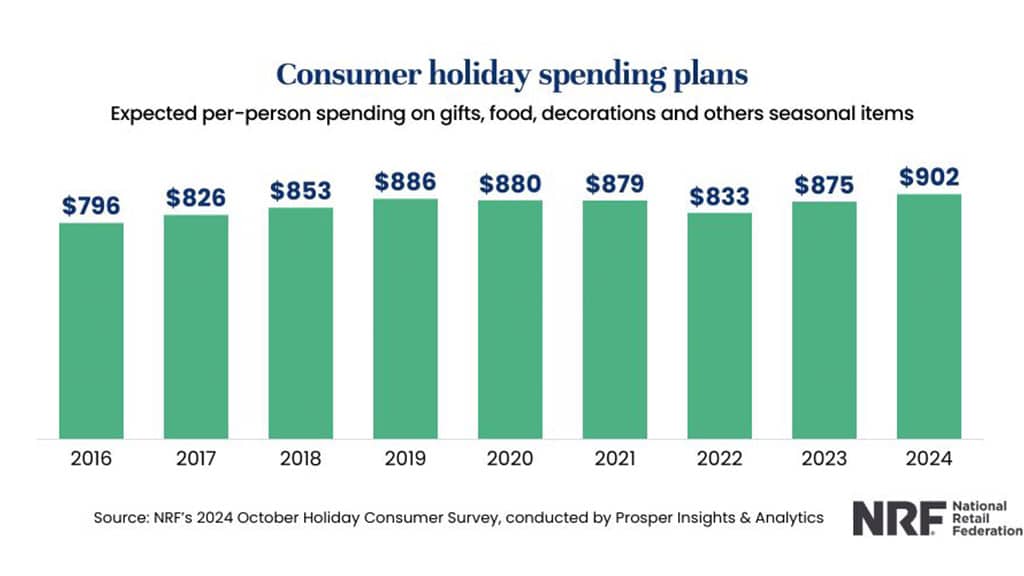As inflation rises and spending cools, all eyes are turning to the 2024 holidays to understand consumer behavior. predict? Surprisingly strong.
The National Retail Federation (NRF) has conducted a new survey on consumer spending heading into the winter holidays. According to their research, average consumer spending is expected to reach an all-time high, reaching $902 per person. By studying the way consumers plan to shop and the products they plan to invest in, NRF paints a picture of the behaviors that impact the market even after the Christmas tree hits the curb.
Consumers spent an average of $902, the highest amount recorded in the survey’s history and a staggering increase from 2023 figures. That’s $16 higher than the record average spend of $886 set in 2019, and $25 higher than last year’s average spend. This increase was primarily due to shoppers prioritizing household spending. Of the $902 shoppers plan to spend, $641 will be on gifts for family, friends and co-workers, an increase of $21 from 2023. Greeting cards, etc.

If the holidays seem to start earlier every year, there’s a reason! In recent years, nearly half (45%) of holiday shoppers plan to browse and purchase holiday merchandise before November 1st. Shoppers do this to spread their budget, avoid the stress of last-minute shopping, avoid crowds, and take advantage of can’t-miss sales. Even though shoppers start shopping early, they still spend time looking for the perfect item on their list. The majority of consumers (62%) expect to complete their shopping in December.
Despite the short gap between Thanksgiving and Christmas, retailers are ready to meet consumer demand, offering holiday shoppers earlier offers and sales and ensuring this year’s best-selling items are in stock.
With a variety of shopping destinations to choose from, consumers can find what they’re looking for at a price that fits their budget. Online shopping remains the most popular channel, with 57% of consumers planning to purchase holiday essentials online. Department stores (46%), supermarkets (46%) and discount stores (45%) follow. This year, research shows a surprising spike in the popularity of holiday shopping at thrift stores among 18-24 year olds (20%). This increase is likely due to this age group’s commitment to saving money and adopting more sustainable behaviors.
This year’s most popular holidays remain largely unchanged from previous years. About half of consumers put gift cards (53%) or clothing/accessories (49%) at the top of their wish lists. This is followed by books and media (28%) and personal care/beauty products (25%).
Visit the NRF website for complete survey data and additional sales trend forecasts for this holiday season.

